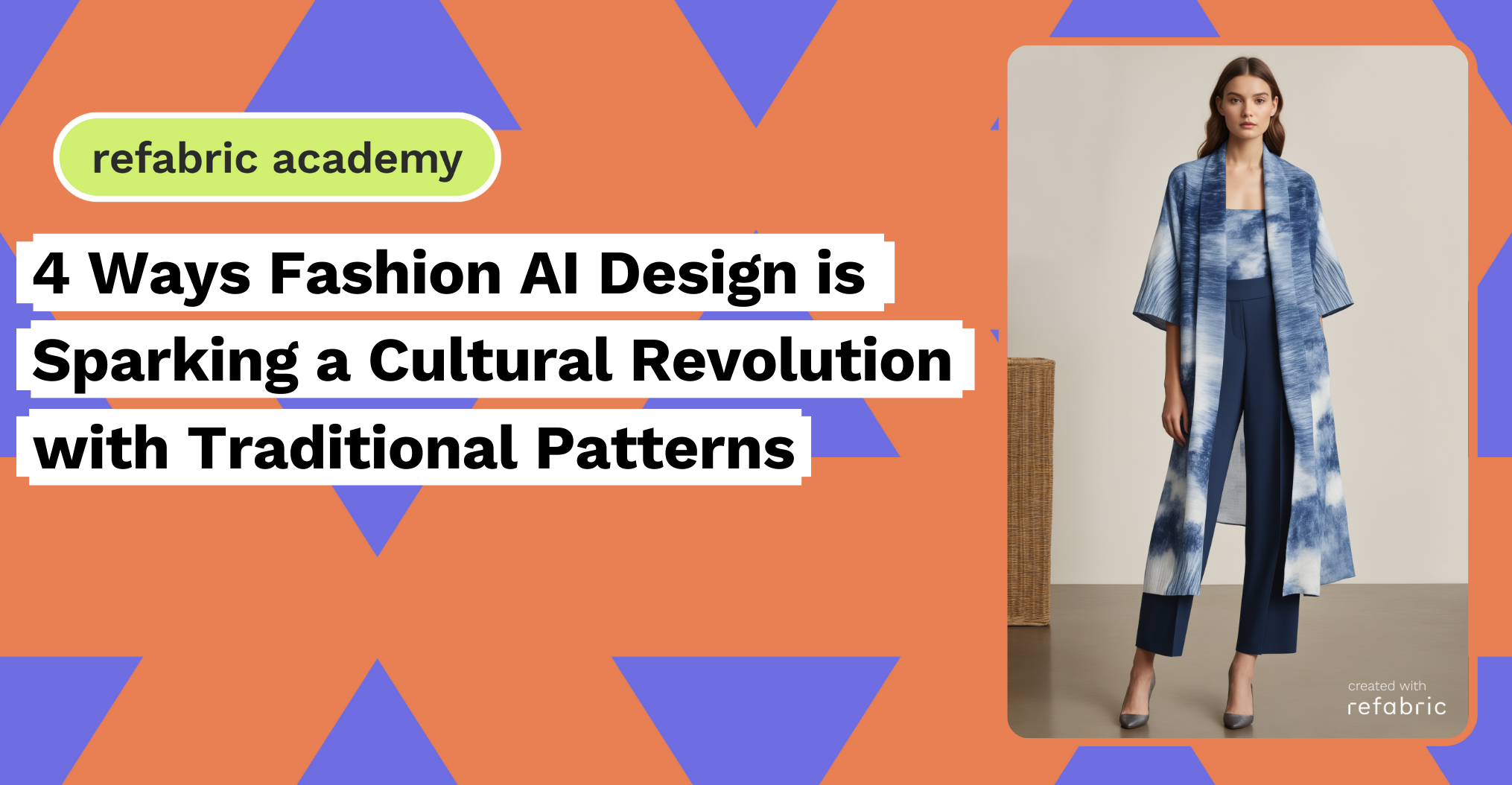In an age where technology touches every facet of life, fashion AI design stands at the crossroads of tradition and innovation, offering endless possibilities for creativity. While the fashion world constantly evolves, a unique trend is emerging: the revival of traditional patterns through fashion AI design. By blending cultural heritage with cutting-edge technology, designers can now tap into global textile traditions and reinterpret them in fresh, forward-thinking ways. Whether it’s the intricate geometric designs of Middle Eastern motifs or the vibrant patterns of African wax prints, AI in fashion is enabling new conversations around heritage and modernity.
The Role of Fashion AI Design in Preserving Tradition
Fashion AI design is a great tool to introduce tradition to innovation. Traditional patterns from around the world, such as Japanese kimonos’ floral prints or the indigenous weavings from Latin America, hold deep cultural significance. AI design can analyze these motifs, understand their symbolic meanings, and reinterpret them for contemporary audiences. For example, using large datasets, fashion AI design can study the elements of Turkish kilim patterns, known for their geometric shapes and bold colors, and propose new, modern interpretations that appeal to both local and global markets.
By digitizing traditional patterns, fashion AI design can help preserve them for future generations, keeping them relevant in an increasingly digital world. This way, traditional pattern prompting could preserve the importance of traditional heritage of different cultures.
Cultural Fusion: Mixing Old and New
One of the most exciting possibilities of AI in fashion design is its ability to mix traditional patterns from different cultures to create entirely new aesthetics. For example, imagine combining the intricate paisley patterns of South Asia with Scandinavian minimalism. With fashion AI design, such creative combinations are not only possible but also highly customizable, allowing for unprecedented levels of originality.
Fashion designers can use AI to generate endless variations of these traditional patterns, remixing them in ways that feel fresh and exciting. A designer could upload several images of traditional fabrics from different parts of the world and instruct the AI to create new designs that blend the best elements of each one. Fashion AI could suggest patterns that retain the historical essence of each culture while incorporating modern trends like sustainability, street style, or even high-fashion couture.
Fashion AI Design as a Global Storyteller
The stories embedded in traditional patterns are often tied to a community’s history, values, and way of life. Fashion AI design becomes a new kind of storyteller, translating these histories into garments that are as meaningful as they are stylish. For instance, the bold, abstract lines of Maasai shuka cloth from East Africa can be woven into contemporary streetwear designs, introducing a new generation of wearers to the rich heritage behind the textiles.
At the same time, the use of AI in fashion design can help prevent the appropriation of traditional motifs by ensuring cultural references are properly contextualized. Fashion AI design algorithms can trace the origins of patterns, making it easier for designers to give credit where it’s due and respect the cultural integrity of the designs they are inspired by.
Reviving Lost Techniques
Some traditional patterns and techniques have been lost to time due to changing fashion tastes or the decline of artisanal crafts. However, AI in fashion design offers a way to revive these forgotten styles. For instance, the ancient art of batik dyeing, once popular in Indonesia, can be reimagined with AI’s help, bringing these intricate designs into the 21st century. By analyzing historical garments, AI can recreate these patterns with incredible accuracy, allowing them to be incorporated into modern fashion collections.
Similarly, fashion AI design can take the ancient art of Japanese shibori dyeing—a method of creating intricate tie-dye patterns—and apply it to modern fashion pieces. The AI can analyze thousands of variations of this traditional technique and suggest new, innovative ways to incorporate it into contemporary designs. This fusion of past and present offers designers a way to pay homage to traditional crafts while pushing fashion into the future.
A New Era of Cultural Innovation
Fashion AI design has the power to transform the fashion landscape by blending the old with the new. It allows designers to experiment with traditional patterns in ways that were once unimaginable, creating culturally rich collections that appeal to modern sensibilities. Through AI, the fashion industry can honor the past while embracing the future, ensuring that the stories, symbols, and techniques of traditional design continue to influence fashion for generations to come.
As we look forward, fashion AI design is not just a technological tool but a bridge between cultures, styles, and eras—making it an essential part of the next evolution in fashion.
